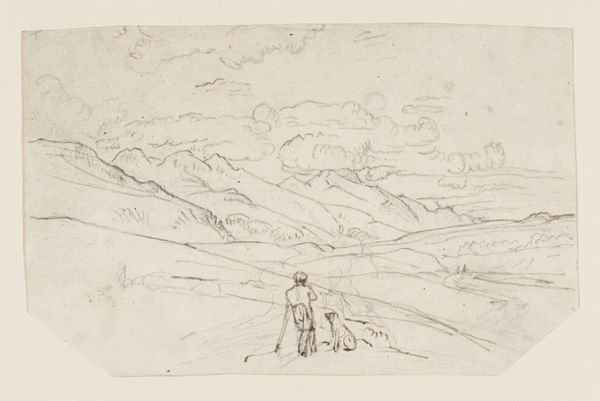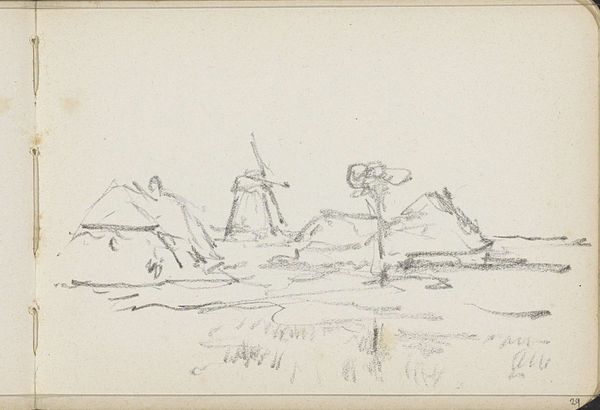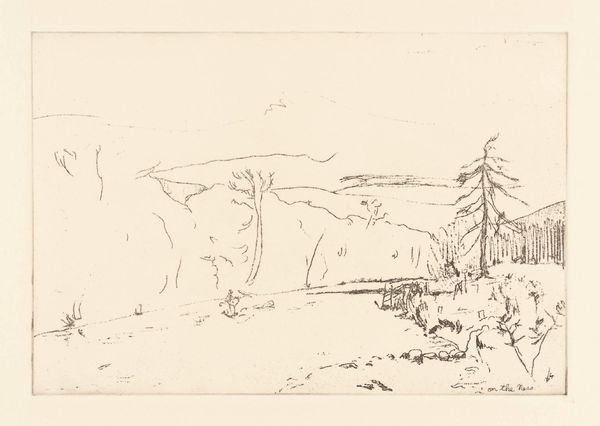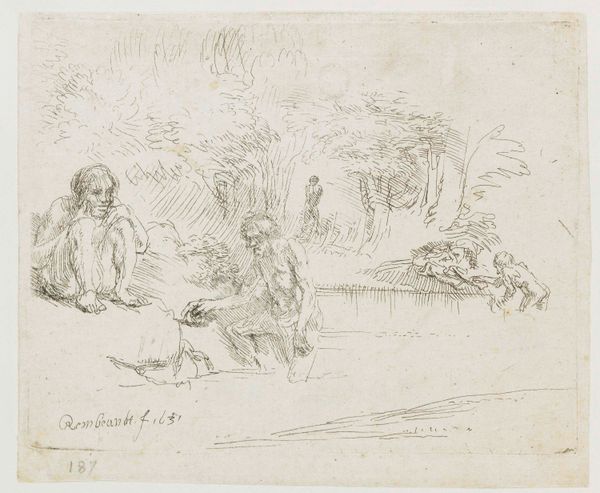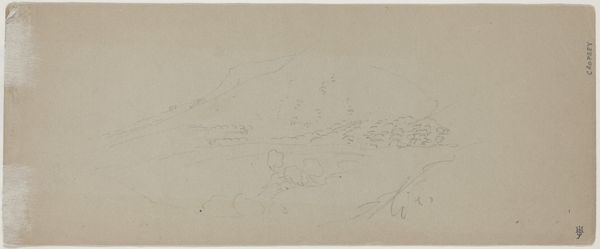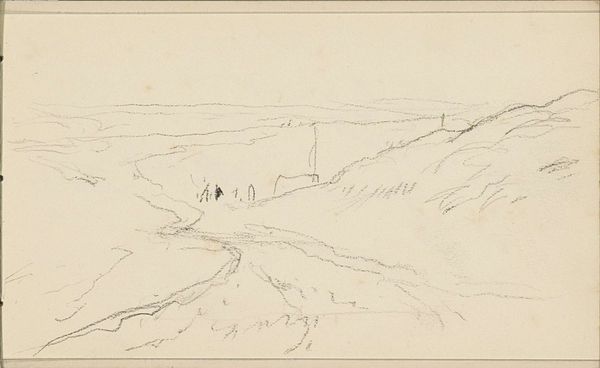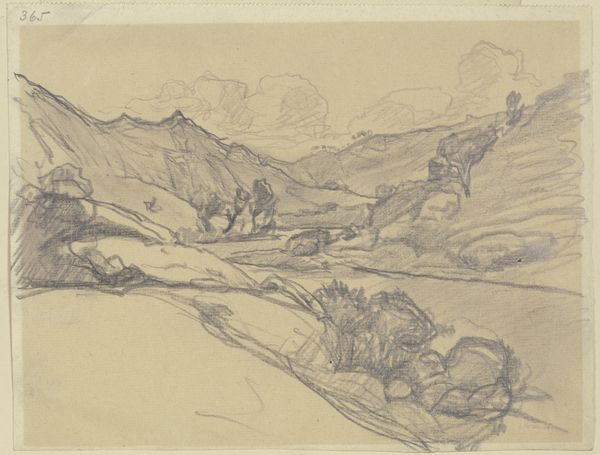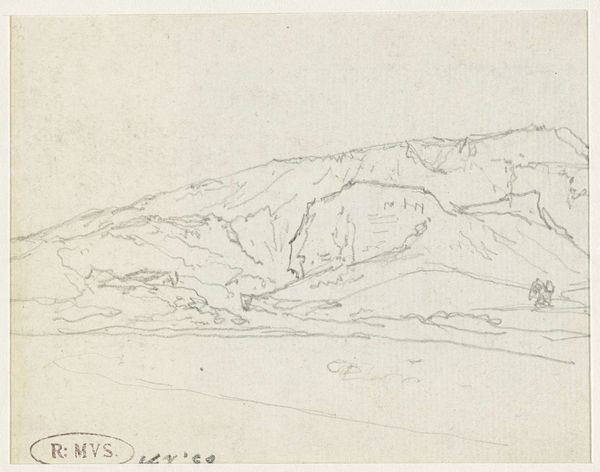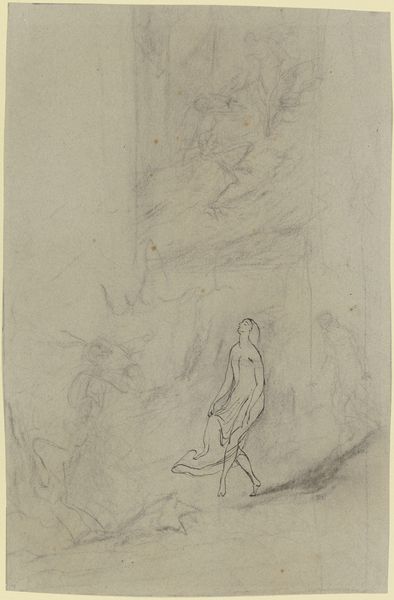
drawing, pencil
#
drawing
#
toned paper
#
light pencil work
#
incomplete sketchy
#
landscape
#
figuration
#
personal sketchbook
#
idea generation sketch
#
sketchwork
#
ink drawing experimentation
#
detailed observational sketch
#
romanticism
#
pencil
#
sketchbook drawing
#
sketchbook art
Dimensions: 236 mm (height) x 168 mm (width) (bladmaal)
Editor: This delicate pencil drawing, "Norsk landskab med bonde stående ved hest," from 1830 by Martinus Rørbye, feels like a fleeting moment captured from a dream. It’s ethereal. What significance might the horse and rider have held in early 19th century Scandinavia? Curator: I see this piece as a fascinating window into the burgeoning national romanticism of the period. Consider the horse, a powerful symbol across cultures – of strength, freedom, and connection to the land. Paired with the farmer, what kind of narrative is woven with them, connecting them to the idealized view of rural life central to Romantic ideals? Editor: So, it's more than just a scene; it represents deeper cultural aspirations? Curator: Precisely. The landscape itself isn’t merely backdrop, it reflects a national identity being shaped and cherished, through visual emblems and the stories they represent. How does that "unfinished" quality of the drawing play into that feeling, for you? Editor: That's interesting; the rough quality gives the scene a certain freedom. It almost looks more intimate as a study for something bigger. Curator: The sketch’s nature reinforces this immediacy. It allows us a peek into the artist’s process of idea generation and symbol exploration. What do you make of the farmer turning his back towards the viewer, is it just to simply to show that he owns that part of the land? Editor: That pose conceals more than it reveals. Maybe his turned back shows the importance of looking towards that cultural, and landscape he represents? Thanks, I am seeing a larger metaphor and can sense that the message conveyed in that period continues until this very day. Curator: Indeed, it’s the ongoing echo of visual symbols, telling the same stories through different forms.
Comments
No comments
Be the first to comment and join the conversation on the ultimate creative platform.
